A few weeks ago, a buddy asked me which flies he should tie for the upcoming season. I thought about it for a few minutes, e-mailed him some potential choices, and then remembered a little game I used to play with the annual Orvis Flies & Fly Tying catalog.
Orvis always had a ton of great patterns in their catalog, and I’d sit down and try to pick my favorite fly from each page. Sometimes it was an easy choice, and sometimes it was hard, but it was a valuable mental exercise as I tried to transition from huge guide boxes (with pretty much every trout fly known to man) to a more manageable, personal fly assortment.
I’ve really cut back on the number of patterns I carry these days, and after thinking it over, I decided it might be fun — and maybe even useful — to share some suggestions about flies. In fact, I’d like to pass along my list of twelve different commercially-available fly patterns that I want along no matter where I’m fishing in the Lower 48 (and beyond).
Keep in mind that these are freshwater flies, not salt, and that I’m shooting for versatility rather than specificity. I’ll also weight the assortment toward my personal preferences, which are skewed toward the topwater side of things. With that in mind, take a look and see what you think.
Streamers
There are a ton of great streamer patterns out there, but I’m only going to pick three. I want maximum versatility - flies that will work in moving water or still, and that will take not only trout, but also bass and pike.
Woolly Bugger
Let’s start out with a fly where you literally can’t go wrong. Woolly Buggers come in all different sizes and colors. Some are weighted and some are not. Some have eyes, some have cones, some have a ton of flash, and some, surprisingly, are old school, with no sparkle, no bead, and a basic whip-finished head. They’ll work for pretty much any species you decide to target. My favorites are tied in black, with brass eyes, a soft saddle hackle and a relatively sparse marabou tail.
Pick Yer Pocket
This is a steelhead fly that’s designed to showcase a large profile and create a ton of movement, but that’s also lightweight and easy to cast. Most folks fish it exclusively for steelhead or salmon, but, tied in appropriate sizes and colors, it will take trout and smallmouth all day long. The great thing about the Pick Yer Pocket is that you can fish it fast or slow, and shallow or deep. You can even dead-drift it with excellent success. Pink and orange are prime color choices for steelhead and salmon, while a brown/yellow mix works awfully well for trout.
Rabbit Strip Leech
This particular fly is as solid & dependable as it gets. It will take pike, bass, trout, steelhead, salmon, panfish … pretty much anything that will eat a streamer will pound a Rabbit Strip Leech. I love the movement — the rabbit looks great in the water — as well as the durability of the fly. The only downside is that they’re heavy when they’re wet. (You probably don’t want to spend all day casting this particular fly with your 4-weight.) My favorite color for trout is black, while chartreuse can be a good choice for pike.
Nymphs
Bead Head Caddis
When I fish with nymphs, I fish a simple Bead Head Caddis about 95% of the time. And by “simple," I mean a tungsten or brass bead on a TMC 2487 hook, with a narrow body dubbed from TroutHunter’s Caddis-Emerger-Nymph dubbing. You can hit the water with a selection of these in various colors and sizes, and, if there are trout to be caught, you will likely catch some. For a solid commercial tie, check out the Orvis Bead Head Hare’s Ear. My go-to colors are olive, tan and grey.
While I’m only including one nymph (I know ... that’s heresy for some folks) in my dozen, I’ll throw a bone to those of you who love to fish nymphs under an indicator. A small, dark, weighted Woolly Bugger dead-drifted through the strike zone can be absolutely deadly. If I had to guess, I’d say that trout and smallmouth will take it for a stonefly nymph, a leech, a crayfish, a hellgrammite, an injured minnow, or even a cranefly. In any case, your Woolly Buggers can, and should, do double duty here. Brown works well, as does black.
Dry Flies
Parachute Adams
The old standby still has a prominent place in my list of 12. It floats well, it’s easy to see, and it can imitate both a mayfly dun and a mayfly spinner. Grey is the obvious color choice, but don’t discount olive or sulphur if there’s a specific local hatch you want to mimic. (Oh, and for some reason, purple really hammers cutthroat trout.)
Royal Trude
A lot of folks have gravitated toward the newer foam flies, and that means the Trude doesn’t get the love it used to. That’s just fine with me. Fish don’t see it as much, which means it's even more effective - especially when the water is choppy or broken. And there’s something about that “Royal” coloration — the greenish peacock herl separated by red floss — that really makes this fly a great attractor, while the white calf-tail wing helps the fly ‘pop’ on the water.
Fat Albert
The Fat Albert is my favorite of the various low-floating, realistic foam bugs. I know some folks prefer Chernobyls, or Chubby Chernobyls, but while those are solid choices, they aren’t quite as effective where the fish are picky. The Fat Albert is a fantastic hopper pattern, and if you go dark and small, it’s a passable beetle as well. My favorite colors are tan or black.
Sparkle Dun
This tried-and-true Craig Mathews & John Juracek pattern does a great job of imitating emerging mayflies that are struggling to escape from their nymphal shuck. Trout key on these insects, which is why the Sparkle Dun continues to catch fish after fish after fish decades after it first gained notoriety. You’ll want to match the body color and the shuck to the local mayfly emergences.
X-Caddis
Over the course of a year, I’ll go back and forth over whether I’d rather fish a LaFontaine Emergent Sparkle Pupa or a Mathews X-Caddis. More often than not, I go with the X-Caddis, so that’s my choice here. The X-Caddis floats well, blurs the line between attractor and imitation, and can be fished either dead drift, with the occasional twitch, or on the swing. This is one of the most versatile flies you can use, and you always want to have a few in grey, green and tan.
Clear Wing Spinner
When the fish are eating spent mayflies, you need a spinner. They’re a little hard to see on the water, but a size 16 Spinner with clear antron wings will take trout pretty much anywhere you’re likely to find rising browns or rainbows. The prime color is ‘rusty,’ but you’ll also want olive, sulphur and some little black guys for the local Trico hatch.
Last Chance Cripple
My favorite mayfly pattern is a slight variation of Rene` Harrop’s Last Chance Cripple, which is, itself, a derivation of a Quigley Cripple. The CDC wing and the submerged abdomen are the piscatorial equivalent of ham & eggs - or maybe beer & chicken wings. In any case, trout just eat the living bejeezus out of this particular fly. You’ll want to match your size and color to the local mayfly hatch.
Stonefly
The last pattern in my box is always one of the ubiquitous stonefly ties. Salmonflies, Golden Stones, Skwalas, and all the various & sundry large stones deserve a big, fluttering fly with a buoyant elk hair or foam body, flexible rubber legs, and an elk hair wing. Some folks prefer classics like the Sofa Pillow, some prefer a rubber-legged Stimulator, and some like a bullet-head pattern with lots of foam. I don’t have a specific go-to pattern to suggest here — they all work well at times — but I always have a handful of these over-sized dries along.






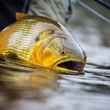



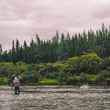
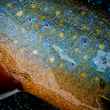



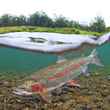
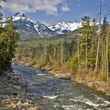








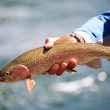
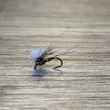


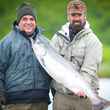
Comments
Apex Flies replied on Permalink
no Kaufman stimulator?
Midge Simpson replied on Permalink
Ed Story's CrackleBack , a basic attractor easily tied , belongs on this list.
You can use it as a top or alone, dry or drowned.
Now you owe me one favor, barbless, and release all the fish you catch.
reydelmundo replied on Permalink
Thanks for your advice. Considering that at least some of your readers might be beginners, and that others might not be completely familiar with each of the patterns your suggest, might it not be really helpful to actually *show* an example of each?
If there are links to illustrations of each, I guess I missed those.
Tight loops.
Anonymous replied on Permalink
Article would be better with photos
John replied on Permalink
No surprises here; however, my favorite versatile fly is missing. The old Hornberg has worked well for me for trout and large mouth bass. Slow retrieve for trout and fast retrieve for bass. I won't be without it.
Jim in Conroe replied on Permalink
Did I miss the link to photos of these flies? Not absolutely necessary, as I can look them up, but it would have been nice.
Bob Fornadley replied on Permalink
Great list for fly fishing out West....
But not the East... I've fished out West for the last 14 years and lived out there for 8 years . I live in Pennsylvania and have been an avid fly fisherman for 58 years. The drys listed, the sparkle dun, the parachute Adams and the rusty spinners will catch fish most anywhere but, really, none of the others listed will rarely get a look here. Try Muddler Minnows, Griffith's Gnats in size #20 , deer hair black ants and Catskill style drys and standard nymphs in appropriate sizes for "Openers" back here in the East. The East and West are two very different fly fishing arenas.
Chad Shmukler replied on Permalink
I have to respectfully disagree, Bob. And fairly intently.
I've been living and fishing in Pennsylvania for 20+ years, and I use almost all of these patterns on a regular basis. I've of course taken countless fish on beadhead caddis patterns and woolly buggers (which will catch fish almost anywhere on the planet), but also on rabbit strip (bunny) leeches and pick-yer-pockets (in fact, it was just 2 days ago that we took a 21" brown trout on an eastern river on a pattern that is very similar to a pick-yer-pocket), fat alberts and other hopper patterns (in the right place, at the right time, of course), mountain brook trout love royal trudes (I like a size 12-16), and stoneflies, too (we don't have big salmonflies like the western rivers do, but that doesn't make smaller stonefly patterns any less effective out East).
Ed snukis replied on Permalink
I also disagree I have caught fish on all these patterns in PA
Pages